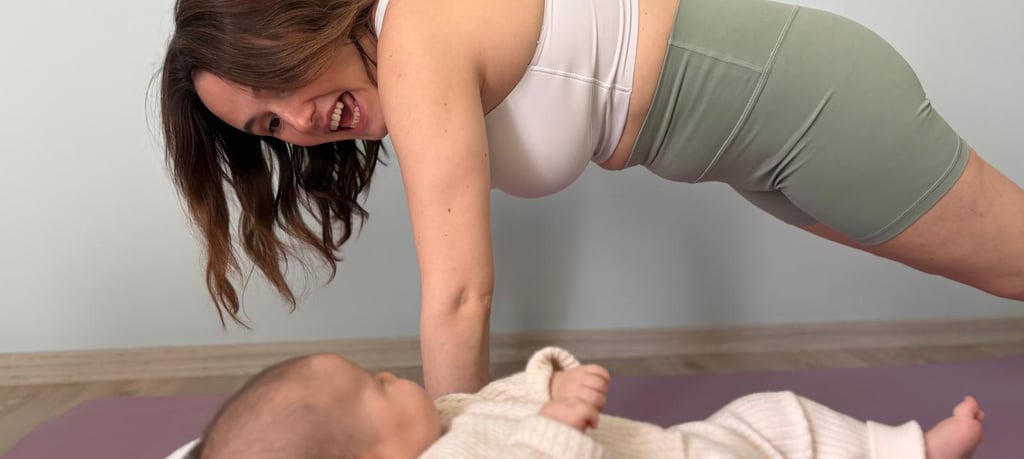Book Online! Email: info@physiokaty.com Phone: 07496 981438
No Time, No Problem: Your Guide to Fitting Exercise as a New Mum


As a Women's Health Physiotherapist, I talk to new mothers every day who are struggling with one major thing: time. Before baby, you might have had a regular gym routine, loved your long runs, or just enjoyed a regular yoga class. Now? Finding 30 continuous minutes to eat, let alone exercise, can feel like a luxurious fantasy.
I want to be clear: It is completely normal to feel like this. Your body has done something incredible, and your number one priority is survival—yours and your baby's. However, movement is medicine, and even small amounts can dramatically improve your energy, mood, and recovery.
Here is my professional guide on how to shift your mindset and seamlessly weave movement into your new, busy life.
1. Shift Your Mindset: Redefine "Exercise"
Forget the hour-long sweat sessions for now. For a new mum, "exercise" is anything that elevates your heart rate slightly, uses your muscles, or helps you connect with your core and pelvic floor.
Goal is Consistency, Not Intensity: Five minutes, three times a day, is infinitely better than waiting for a mythical 30-minute block that never appears.
Focus on Function: Your movement should help you manage the demands of motherhood: lifting the car seat, carrying a growing baby, maintaining good posture while feeding, and bending hundreds of times a day.
2. The Power of "Micro-Workouts" (The 5-Minute Fix)
These are short, focused movements you can do while the baby is having "tummy time," is in a bouncer, or just before your shower. The key is quality movement over quantity.
Physio Tip: Always check with your Women's Health Physio before starting any new routine, especially if you have had a C-section or have concerns about Diastasis Recti (abdominal separation).
3. Move Beyond Just Kegels: Integrate Your Pelvic Floor
As a Women's Health Physio, I need to make one thing crystal clear: Kegels alone are not the solution. The pelvic floor is a muscle system that needs to work in partnership with your deep core and breathing, and it needs to be strengthened while you move, not just when you're sitting still.
How to Integrate Pelvic Floor Work:
Exhale on Effort: This is your golden rule. Every time you exert yourself—lifting the baby, pushing the stroller up a hill, or doing a squat—gently lift your pelvic floor and exhale simultaneously. This helps manage intra-abdominal pressure and protects your core.
Use Functional Cues:
During a Squat: Lift the pelvic floor before you stand up.
Before a Cough/Sneeze: Perform a quick lift (the "knack") to prevent leakage.
Focus on Relaxation: Your pelvic floor must be able to relax fully. Practice Deep Core Breathing where you consciously "let go" and allow the pelvic floor to lengthen on the inhale. A tight pelvic floor is not always a strong one.
4. Integrate Movement with Baby Time
Your baby is your new workout buddy! Use them as a gentle weight and their naptime as your opportunity.
The "Pram Power Walk": This is your daily non-negotiable. Aim for a brisk pace that challenges you slightly. Focus on good posture (shoulders back, chest open) and actively pushing from your glutes and core—not just your arms.
Naptime Core & Glutes: When baby is sound asleep, use 10 minutes to focus on slow, controlled, and integrated movements like:
Glute Bridges: Incorporate your pelvic floor lift as you push your hips up.
Bird-Dogs: Maintain a neutral spine and integrate your deep core breathing as you extend your opposite arm and leg.
Final Encouragement: Be Kind to Your BodyYour body is not only recovering from birth but is also running on fragmented sleep. On days where you are truly exhausted, choose restorative movement over intense workouts. Prioritize gentle stretches for your chest and hips, and simple, calming breathwork.
Start with 5 minutes. Feel the difference in your mood, energy, and strength. You are not just exercising for a "pre-baby body"; you are moving to be a strong, resilient, and energized mother.
Ready to start moving safely?
If you have concerns about your core, pelvic floor, or safely returning to exercise after birth, book a one-to-one Postnatal Check-up with me. We will assess your specific needs and create a safe, effective plan designed for your busy life.
Physio Katy
Breeze Yoga 9 Albemarle Rd Beckenham BR3 5HZ
We are located within Breeze Yoga in Beckenham, easily accessible from Beckenham Junction Station
